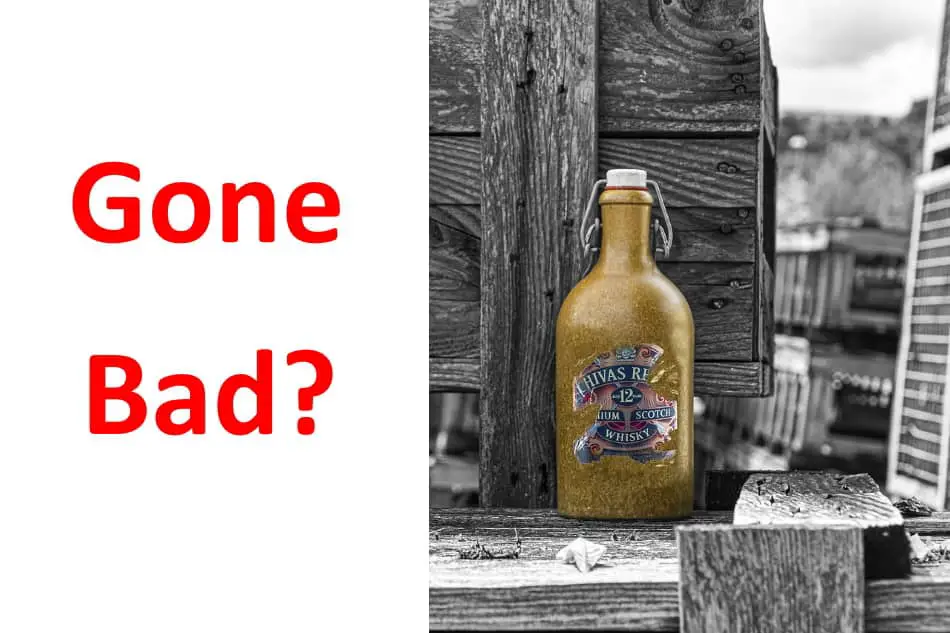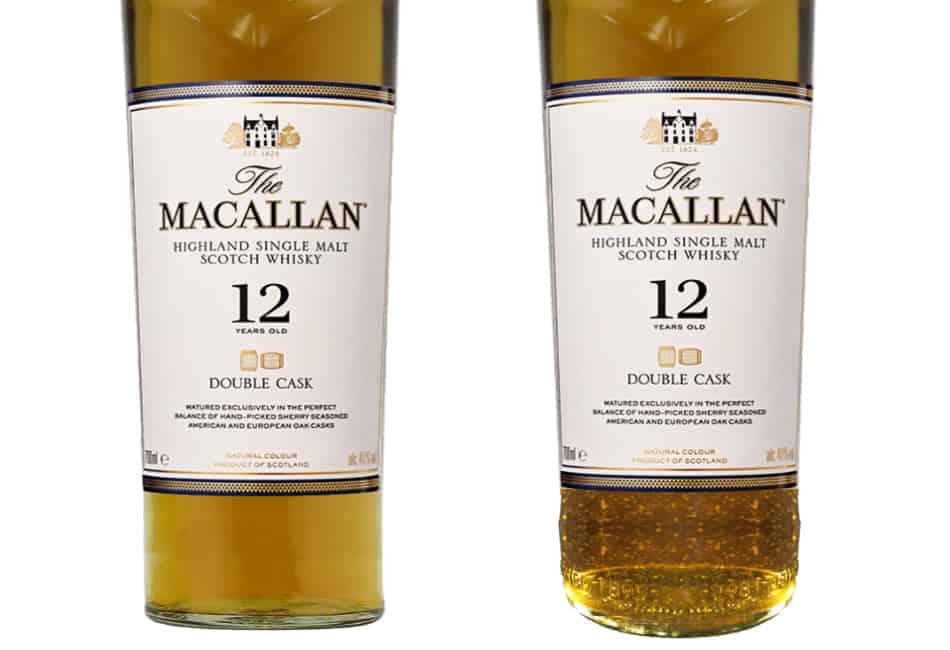Maybe you’ve found a bottle of whiskey you never knew you had, or a well-meaning friend has given you a bottle he doesn’t want anymore. Either way, if you’re anything like me then you won’t want to waste something that may still be good but on the other hand, you don’t want to risk drinking something that’s possibly gone off.
The solution: check your whiskey for these eight things and you’ll easily be able to tell whether it’s still good to drink or has gone bad and should be thrown away.

1. Work Out How Long the Bottle’s Been Open For
If your bottle of whiskey is still sealed then skip to step 3, but if not then the first thing to do is to work out how long the bottle has been open for. That’s because as soon as a bottle of whiskey is opened it starts to oxidize.
Oxidation is when oxygen binds to one chemical compound and turns it into another, and in whiskey that means binding to one flavor compound and turning it into another. Although oxidation starts as soon as you open the bottle, it doesn’t change the flavors of your whiskey immediately. That takes anywhere from six months to two years.
So, if your bottle has been open for longer than two years then you know the whiskey has definitely oxidized.
Although oxidation makes a whiskey go bad by changing its flavors this doesn’t mean the whiskey is unsafe to drink. It just means that it won’t taste the way it was supposed to. Which is why there are several things you can do if you think your whiskey has oxidized.
- See if your whiskey is still drinkable – in some cases oxidation can make your whiskey taste better, but even if it doesn’t the change may still leave it good enough to drink.
- Mix it with other whiskeys – after all, many blended whiskeys contain several that don’t taste good by themselves. This is a good time to start experimenting with your own blends.
- Re-age your whiskey – give your whiskey more flavors by adding oak wood sticks or aging it in your own (mini) barrel. I wrote a detailed article about ageing whiskey yourself which you can find here.
2. Note The Filling Level of the Bottle

As mentioned, it takes between six months to two years for an opened bottle of whiskey to oxidize, so if your bottle has been open for longer than that you know the flavors of the whiskey will have definitely changed.
However, if the bottle has been open for less than two years then it’s more difficult to tell if oxidation has occurred from this factor alone, as it will depend on how much air the whiskey has come into contact with.
One of the most common ways whiskey in opened bottles comes into contact with air is through the headspace – the empty space in the bottle between the whiskey and the lid that’s actually air. The more headspace, the more air there is in the bottle and the sooner the whiskey will oxidize.
To give you some idea of how headspace affects the speed of oxidation:
- If there’s an inch or two of headspace the whiskey will oxidize after about a year.
- If three quarters of the bottle is headspace the whiskey will oxidize in about a month.
That’s why you need to take note of the filling level – meaning how much whiskey there is in the bottle, as it will tell you whether the whiskey in bottles that have been open for less than two years, has oxidized.
3. Examine The Seal of the Bottle
The next thing you should do to tell if your whiskey has gone bad is to examine the seal of the bottle. You want to see if it’s damaged or loose in which case air will have entered the bottle and may have oxidized your whiskey, or worse, moldy in which case the whiskey has been contaminated and you should not drink it.
Examining the seal is much easier to do if the bottle is already open, as you can more easily test how loose the cork or lid is and more thoroughly assess it for any damage or mold, but you should still check the seal of unopened bottles of whiskey as best you can.
That’s because although the seals of closed bottles are airtight, they’re not 100% airtight, so small amounts of air can still get in and if stored that way for many years it can add up to enough to oxidize your whiskey. It’s also because under poor storage conditions the cork can become damaged and therefore loose which leads to oxidation, or moist which can lead to it becoming moldy.
To learn more about what constitutes poor storage conditions, see this more detailed article I wrote about how to store whiskey properly, which you can find here.
4. Inspect The Bottle
The next thing you should do to tell if your whiskey’s gone bad is to inspect the bottle itself. This time you’re looking for any leaks or mold.
If the bottle is leaking then air has probably gotten inside and oxidized your whiskey. If the bottle is moldy then once again, things are worse. Your whiskey has been contaminated and you should not drink it.
5. Look For Sediment at The Bottom of The Bottle

While inspecting the bottle you should look to see if there’s any sediment at the bottom. That’s because sediment at the bottom of the bottle can mean the whiskey’s gone bad due to being exposed to too much direct sunlight. In such a case, you should not drink the whiskey.
However, sediment at the bottom of the bottle can also mean that the whiskey was not filtered properly when the bottle was filled from the cask, and in such a case the whiskey would be perfectly okay to drink.
This means that the presence of sediment is not a conclusive indicator that your whiskey has gone bad, but a warning that it might have.
6. Assess The Color of The Whiskey
The next thing you should do to tell if your whiskey’s gone bad is to assess its color. If it’s darker than usual and slightly syrupy then some of the watery components may have evaporated. If it’s lighter than usual then your whiskey may have been exposed to too much sunlight. Either way, the taste of your whiskey has probably been negatively affected.
Obviously, this step only helps if you know what color your whiskey is supposed to have in the first place.
7. Smell The Whiskey
Once you’ve done all the visual assessments of the bottle and the whiskey, all that’s left do to see if it’s gone bad is to test the whiskey itself in the same way you would consume it.
In other words, it’s time to tell if your whiskey has gone bad by smelling it.
If your whiskey smells okay then it’s probably not gone bad. If your whiskey smells okay just not how you expected it to then its taste has probably been affected, although it’s likely to still be good to drink. If your whiskey smells odd or funny then it’s probably been contaminated, and you should not drink it.
8. Taste The Whiskey
The last thing you can do to tell if your whiskey has gone bad is to taste it.
If your whiskey tastes mild, harsh or flat then something has changed its taste. You can still drink it if you wish but I would understand if you didn’t want to. If your whiskey has a sour, metallic or strange taste then it’s been contaminated, and you should not drink it.
